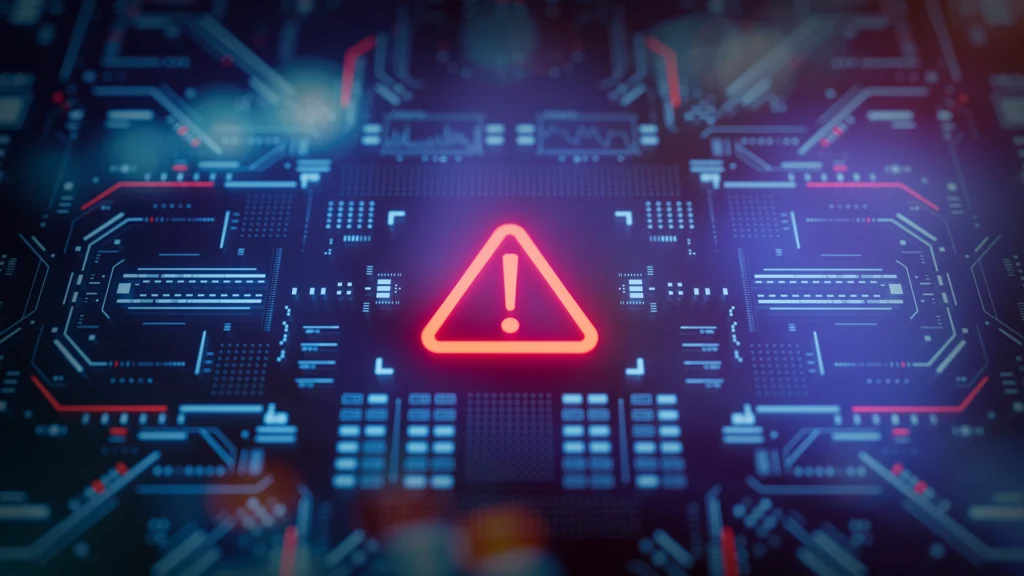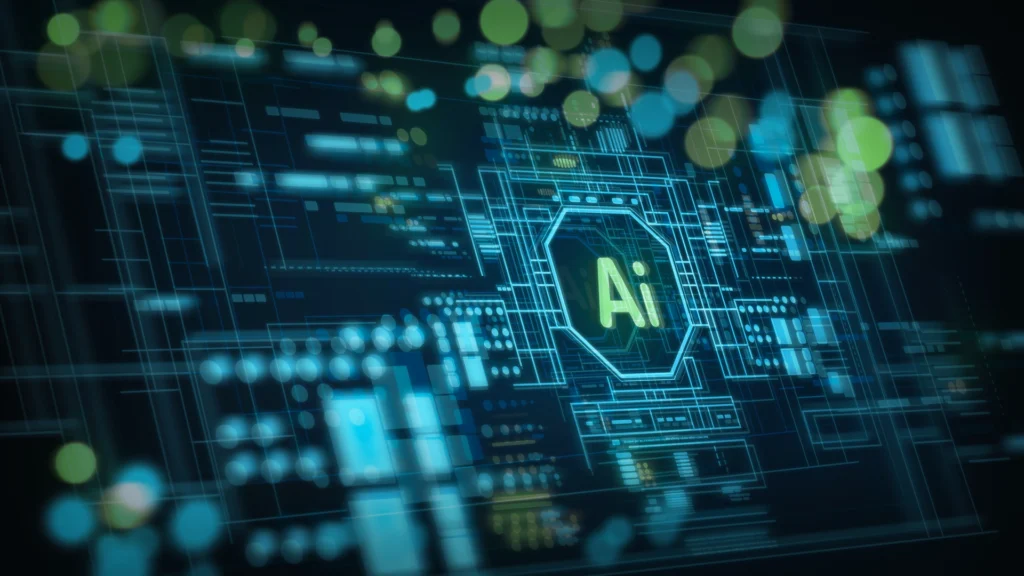In today’s ever-evolving threat landscape, traditional Security Operations Centers (SOCs) are struggling to keep pace with the volume and sophistication of cyberattacks. Alert fatigue, manual processes, and a shortage of skilled analysts often lead to missed threats and delayed responses. Enter the AI-powered SOC, a transformative approach that leverages artificial intelligence and machine learning to supercharge threat detection, incident response, proactive security, operational efficiency, and even governance. In this article, we’ll dive into the value of AI-driven SOCs, showcasing their benefits, distinctive features, and supporting technical use cases.
Elevated Threat Detection & Anomaly Detection
At its core, an AI-powered SOC drastically enhances its ability to spot malicious activity within the organization. It moves beyond signature-based detection, identifying zero-day malware through behavioral anomaly analysis, and can reveal complex Advanced Persistent Threats (APTs) by correlating seemingly disparate, low-fidelity indicators over time.
AI excels at pinpointing insider threats and compromised accounts by flagging unusual user behaviors like off-hours logins or excessive data downloads. On the network front, AI continuously monitors for network anomalies such as unusual protocols or data exfiltration attempts and extends this vigilance to cloud workload anomaly detection, spotting unauthorized API calls or abnormal resource provisioning.
The expanding attack surface of IoT devices and SaaS applications also benefits from AI’s ability to detect anomalous communications or mass data exports. From rapidly identifying DDoS attacks to spotting credential stuffing and brute-force attempts, AI provides real-time insights. It’s crucial for detecting subtle lateral movement within a network and offering ransomware early warnings by identifying precursor activities. AI even uncovers sophisticated techniques such as supply chain attacks, DNS tunneling, and stealthy port scanning, which are designed to evade traditional defenses.
Beyond the network, AI analyzes web server logs for web application attacks (like SQL injection), flags data exfiltration attempts, and scrutinizes endpoint behaviors for malicious file execution, privilege escalation, and unusual process execution. Furthermore, it continuously scans for misconfigurations and leverages advanced analytics to identify sophisticated phishing and spear phishing emails as well as cryptojacking activities, ensuring a comprehensive detection layer.
Technical Use Cases:
- Malware and Exploit Detection: Zero-Day Malware Detection, Malicious File Execution Detection, Ransomware Early Warning, Privilege Escalation Detection, Unusual Process Execution
- Network and Cloud Threat Detection: Network Anomaly Detection, Cloud Workload Anomaly Detection, DDoS Attack Detection, DNS Tunneling Detection, Stealthy Port Scanning Detection
- User and Identity-Based Threat Detection: Insider Threat Detection, Compromised Account Detection, Credential Stuffing/Brute-Force Detection, Lateral Movement Detection
- Email and Social Engineering Threats: Phishing Email Detection, Spear Phishing Detection
- Application and Data Security: Web Application Attack Detection, Data Exfiltration Detection, Advanced Persistent Threat (APT) Detection
Accelerated Incident Response & Remediation
Once a threat is identified, an AI-powered SOC dramatically reduces response times and human effort. It automates incident triage, intelligently prioritizing alerts, and performs automated incident enrichment by instantly gathering crucial contextual data such as user identity, asset criticality, and threat intelligence. The SOC can then execute dynamic playbook execution, triggering predefined automated responses tailored to the specific threat. These include critical actions such as automatically isolating compromised hosts, terminating malicious processes, blocking suspicious IPs at the firewall, and quarantining or deleting phishing emails from user inboxes.
For compromised accounts, AI can initiate credential resets or force MFA re-enrollment and even roll back malicious changes made by malware. AI facilitates threat containment orchestration across diverse security tools and automates forensic data collection for deeper analysis. It assists analysts by generating incident summaries, providing recommended remediation actions, and intelligently suppressing false positives to reduce alert fatigue.
Post-incident, AI automates cleanup tasks such as removing persistence mechanisms and patching vulnerabilities. Further response actions include automated user account disablement, dynamic firewall rule adjustments, SaaS access revocation, and the quarantine or deletion of cloud resources. It can force Multi-Factor Authentication (MFA) enforcement for high-risk access, automatically block malicious URLs/domains, and orchestrate automated patch deployment for critical vulnerabilities.
Critically, AI continuously refines behavioral baselines and handles automated ticketing and escalation to ensure seamless workflow, while also enforcing compliance policies during the response phase.
Technical Use Cases:
- Incident Response & Containment: Compromised Host Isolation, Malicious Process Termination, Suspicious IP Blocking, Phishing Email Quarantine/Deletion, Threat Containment Orchestration, Blocking Malicious URLs/Domains, Cloud Resource Deletion/Quarantine, User Account Disablement (Automated), Firewall Rule Adjustment (Automated), Multi-Factor Authentication (MFA) Enforcement
- Automated Triage & Enrichment: Automated Incident Triage, Automated Incident Enrichment, Incident Summary Generation (AI-assisted), Recommended Remediation Actions, Automated Alert Suppression
- Remediation & Recovery: Post-Incident Cleanup Automation, Automated Patch Deployment (Critical Vulnerabilities), Compliance Policy Enforcement (Automated)
- Workflow Automation & Orchestration: Dynamic Playbook Execution, Automated Ticketing and Escalation
Proactive Threat Hunting & Security Posture
Beyond reacting to threats, AI empowers the SOC to be proactive. It generates intelligent AI-driven threat hunting queries for SIEMs and utilizes predictive threat analysis to anticipate future attack vectors based on current intelligence. AI assists in proactive vulnerability prioritization, focusing efforts on weaknesses most likely to be exploited. AI-driven threat hunting has shifted this paradigm by enabling the proactive identification of hidden threats through behavioral investigation and pattern recognition. These systems continuously monitor network traffic, endpoint activities, and user behaviors to detect subtle anomalies that may indicate compromise.
AI-powered mapping now automatically correlates observed behaviors with specific ATT&CK techniques, providing analysts with valuable context about attacker methodologies. These data can be leveraged to develop hypotheses for hypothesis-driven hunting.
This capability enables companies to detect sophisticated, advanced persistent threats (APT) that have evaded traditional security controls for months. AI-driven threat hunting identifies unusual data movement patterns during non-business hours. The system automatically establishes baseline behaviors for different user groups and network segments, enabling it to detect deviations from normal operations without requiring predefined rules. By correlating multiple weak indicators across different systems, the AI identifies a coordinated attack that would have been impossible to detect through conventional methods.
It can even perform automated red teaming and adversary simulation to test defenses and actively monitors the dark web for threats related to organizational assets or credentials. The system automatically performs IoC expansion and correlation, enriching initial indicators with broader context. Proactive identification of weak configurations and shadow IT discovery helps shrink the attack surface.
AI significantly enhances threat intelligence enrichment, consolidating vast data streams, and intelligently manages deception technologies like honeypots. It actively recommends and implements security posture optimizations and performs vulnerability exploitability assessments to determine true risk. By analyzing user peer groups, AI uncovers behavioral anomalies, while also providing continuous supply chain risk assessment and comprehensive attack surface mapping and reduction strategies.
Technical Use Cases:
- Proactive Threat Detection & Hunting: AI-Driven Threat Hunting Queries, Predictive Threat Analysis, Automated Red Teaming/Adversary Simulation, User Peer Group Analysis
- Vulnerability & Risk Assessment: Proactive Vulnerability Prioritization, Vulnerability Exploitability Assessment, Supply Chain Risk Assessment (Continuous), Attack Surface Mapping and Reduction
- Threat Intelligence & Correlation: IoC Expansion and Correlation, Threat Intelligence Enrichment
Security Operations Efficiency & Optimization
AI is a game-changer for SOC efficiency. It dramatically improves false positive reduction by learning to distinguish benign activities from genuine threats, thus freeing up analyst time. AI intelligently performs alert deduplication and aggregation, reducing noise, and optimizes workload prioritization for analysts based on skill and incident severity.
Routine tasks, such as automated report generation, become seamless. AI helps optimize SOC staffing by predicting peak demand and contributes to knowledge base automation, ensuring analysts have up-to-date information. It provides automated training for junior analysts by offering real-time context and recommendations. Seamless tool integration and orchestration across the security stack is managed by AI, enabling smoother workflows. It continuously performs performance monitoring of security controls and recommends cost optimization for cloud security without compromising safety.
From automated compliance checks to ensuring automated policy enforcement, AI maintains a strong security posture. It even contributes to predictive maintenance for security tools themselves and facilitates an automated user feedback loop for alerts, improving its learning. Finally, AI intelligently manages optimized log management, ensuring that only necessary and valuable logs are collected and stored, yielding significant cost savings.
Technical Use Cases:
- Alert Management & Analyst Efficiency: False Positive Reduction, Alert Deduplication and Aggregation, Workload Prioritization for Analysts, Automated User Feedback Loop (Alerts), Knowledge Base Automation
- Automation & Orchestration: Automated Reporting Generation, Tool Integration and Orchestration, Automated Policy Enforcement, Automated Compliance Checks
- Security Tool Performance & Maintenance: Performance Monitoring of Security Controls, Predictive Maintenance for Security Tools
Enhanced Governance, Risk & Compliance (GRC)
AI plays a crucial role in maintaining a robust GRC posture. It conducts automated compliance gap analysis against regulations like GDPR or HIPAA and streamlines automated evidence collection for audits. AI provides dynamic risk scoring and prioritization for assets and vulnerabilities based on real-time threats and business impact. It automatically detects policy violations, generates automated reporting for regulatory bodies, and assists in data classification and protection by applying appropriate controls.
AI helps automate Identity Governance & Administration (IGA), ensuring least privilege, and facilitates third-party risk assessment automation. It extends its reach to supply chain compliance monitoring and ensures rigorous data privacy policy enforcement across the organization.
Technical Use Cases:
- Compliance Automation & Reporting: Automated Compliance Gap Analysis, Automated Evidence Collection for Audits, Automated Reporting for Regulatory Bodies, Supply Chain Compliance Monitoring
- Risk Management & Assessment: Risk Scoring and Prioritization (Dynamic), Third-Party Risk Assessment Automation
- Policy Enforcement & Monitoring: Policy Violation Detection, Data Privacy Policy Enforcement
- Data & Identity Governance: Data Classification and Protection, Identity Governance & Administration (IGA) Automation
Emerging & Advanced AI Use Cases
Emerging and advanced AI use cases are ushering in a new era of innovation in cybersecurity, empowering SOCs to operate with greater speed, precision, and adaptability. From generative AI that summarizes complex threat intelligence to sophisticated AI-driven simulations, automated playbook generation, and adversarial AI detection, these capabilities are transforming how organizations anticipate, respond to, and recover from cyber threats.
AI-Enhanced Threat Intelligence and Analysis: Generative AI for Threat Intel Summarization, AI-Powered Incident Post-Mortem Analysis, Threat Prediction/Forecast, Threat Simulation in Memory, Accelerated Malware Analysis, Real-Time Sandboxing
AI-Driven Simulation, Testing & Resilience: AI Attack Simulation with Data Points, Automated Pen Testing, AI-Driven Cyber Resilience Orchestration, Threat Simulation in Memory
AI for Security Automation, Protection & Governance: Generative AI for Playbook Generation, Adversarial AI Detection, Quantum-Resistant Cryptography Assessment, Automated Security Awareness Training Customization, AI for Securing AI Systems
The AI-powered SOC represents a fundamental shift in how organizations approach cybersecurity, transforming reactive defense into intelligent, proactive protection. By integrating AI across detection, response, threat hunting, operations, and governance, security teams can scale their capabilities, reduce manual workloads, and stay ahead of increasingly sophisticated threats. As the threat landscape continues to evolve, adopting AI-driven capabilities is no longer a luxury; it is a necessity for building a resilient, future-ready security posture.





